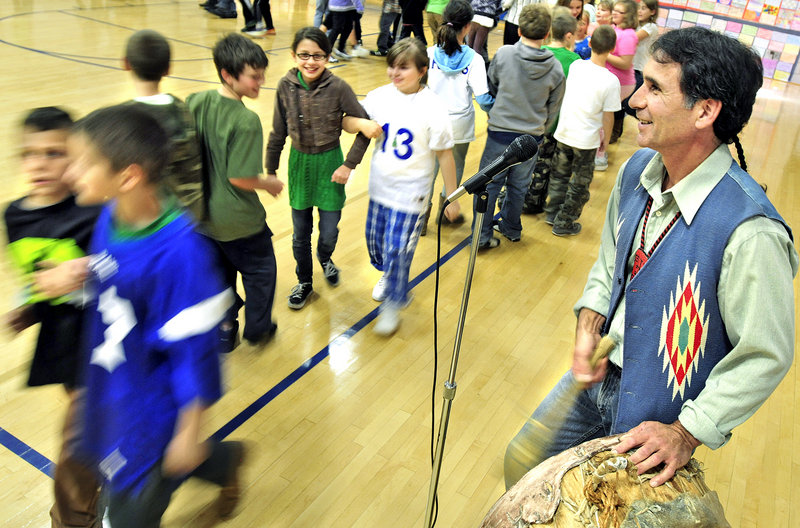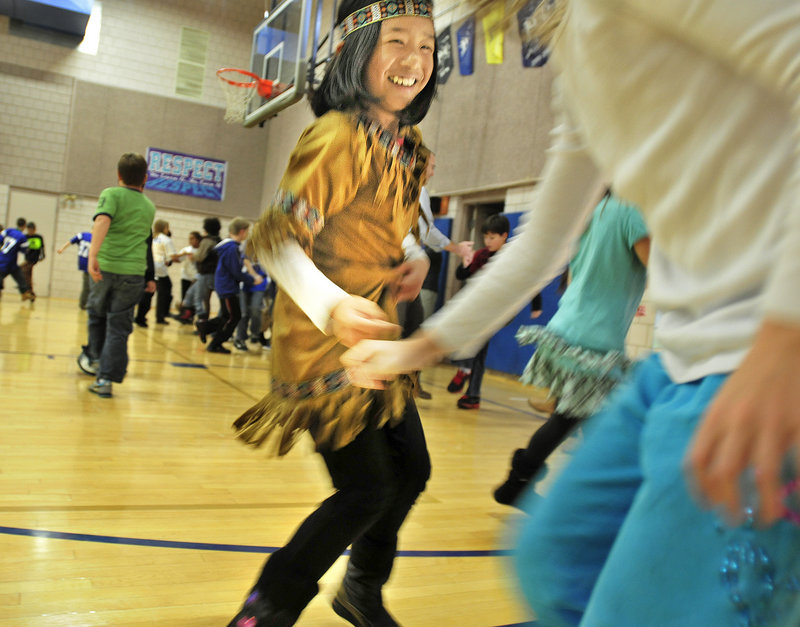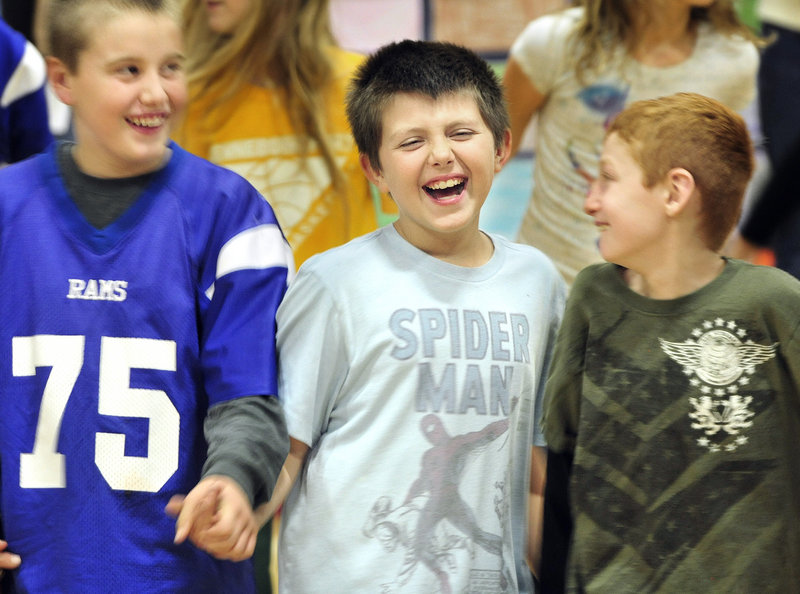KENNEBUNK – Murmurs of excitement rippled through the auditorium when the children learned that the mosquito dance was up next.
“It you don’t have good timing, the footwork can be a little challenging,” Barry Dana cautioned the assembly at Sea Road School.
The school’s fifth-graders had already had some time to practice the American Indian dance, but it was likely that this would be their parents’ first try. The dance was just one of the activities the students did this week as they studied with Dana, a former chief of the Penobscot Nation who teaches about traditional practices in schools.
A pair of girls demonstrated their mosquito moves: Face your partner and interlock the right pinkies, kick the right foot toward each another, twist the body and kick with the left foot and repeat again and again — while moving in a loop around the room.
The rest of the fifth-graders and the staff soon joined them on the floor. Before long, the children had pulled in their parents as well.
The assembly Friday was the culmination not only of Dana’s week as an artist in residence but also of the American Indian unit that fifth-graders have been working through for the past several weeks.
Each fifth-grader chose a tribe to research and learned about topics such as geography, home life and culture and beliefs. The students assembled their findings on cardboard displays.
The activities this week with Dana included building a survival shelter with leaves and branches from the school grounds, making twine from bark and learning about cultural artifacts like the smokehouse and baskets he brought to the school.
There were also story-telling and question-and-answer sessions in which the students were free to ask any questions they had about native cultures.
“All of the things they have researched, he hits upon,” said Wendy Thompson, the fifth-grade team leader.
Growing up on the Penobscot reservation on Indian Island, Dana learned traditional skills from his grandfather and other elders. In the mid-1980s, after earning an education degree from the University of Maine, he taught Penobscot culture in the Indian Island school.
Fifth-graders Colby Ellis and Alice Hauser each said they learned some surprising things this week. An orange plant that grows near poison ivy, for example, can serve as an antidote. And the inner portion of grass is edible.
“We got to learn a lot of new things probably none of us would have known,” Colby said.
The assembly included five dances in all, mostly those that are shared among tribes. The round dance, with an inner and outer circle of people holding hands, closed the assembly. Dana said because the circle is sacred, there’s good energy when people are in one. He stressed that dancing is not about performance but about community.
“When you work and learn together,” he said, “it really creates a bond.”
Staff Writer Ann S. Kim can be contacted at 791-6383 or at: akim@pressherald.com
Copy the Story Link
Send questions/comments to the editors.





Success. Please wait for the page to reload. If the page does not reload within 5 seconds, please refresh the page.
Enter your email and password to access comments.
Hi, to comment on stories you must . This profile is in addition to your subscription and website login.
Already have a commenting profile? .
Invalid username/password.
Please check your email to confirm and complete your registration.
Only subscribers are eligible to post comments. Please subscribe or login first for digital access. Here’s why.
Use the form below to reset your password. When you've submitted your account email, we will send an email with a reset code.